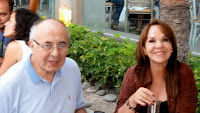

We have visited Lords of Sipan, Kuelap, Chan Chan & Chavin among other great archaeological sites in Northern Peru. So we enjoyed seeing some of the best artifacts from the sites in the Larco & National museums. The Larco tied the findings and clarified pre-Inca Peruvian history. We live for enlightenment like this! They even have a small library if you want to go beyond the labels. We understand more about what we saw in the north, and are properly prepared for both Inca and Pre-Inca history in the south. Also, the Larco museum has beautiful grounds and a very good restaurant. Oh, and a gift shop…


We are looking forward to Justin’s arrival tomorrow and the sta
The carrying capacity for taking things back home holds us back from buying even more loot. To make room, I have started discarding clothes and things that I am tired of. That won’t be enough. We are going into an area with incredible weaving and crafts. Fed Ex, here we come!















































